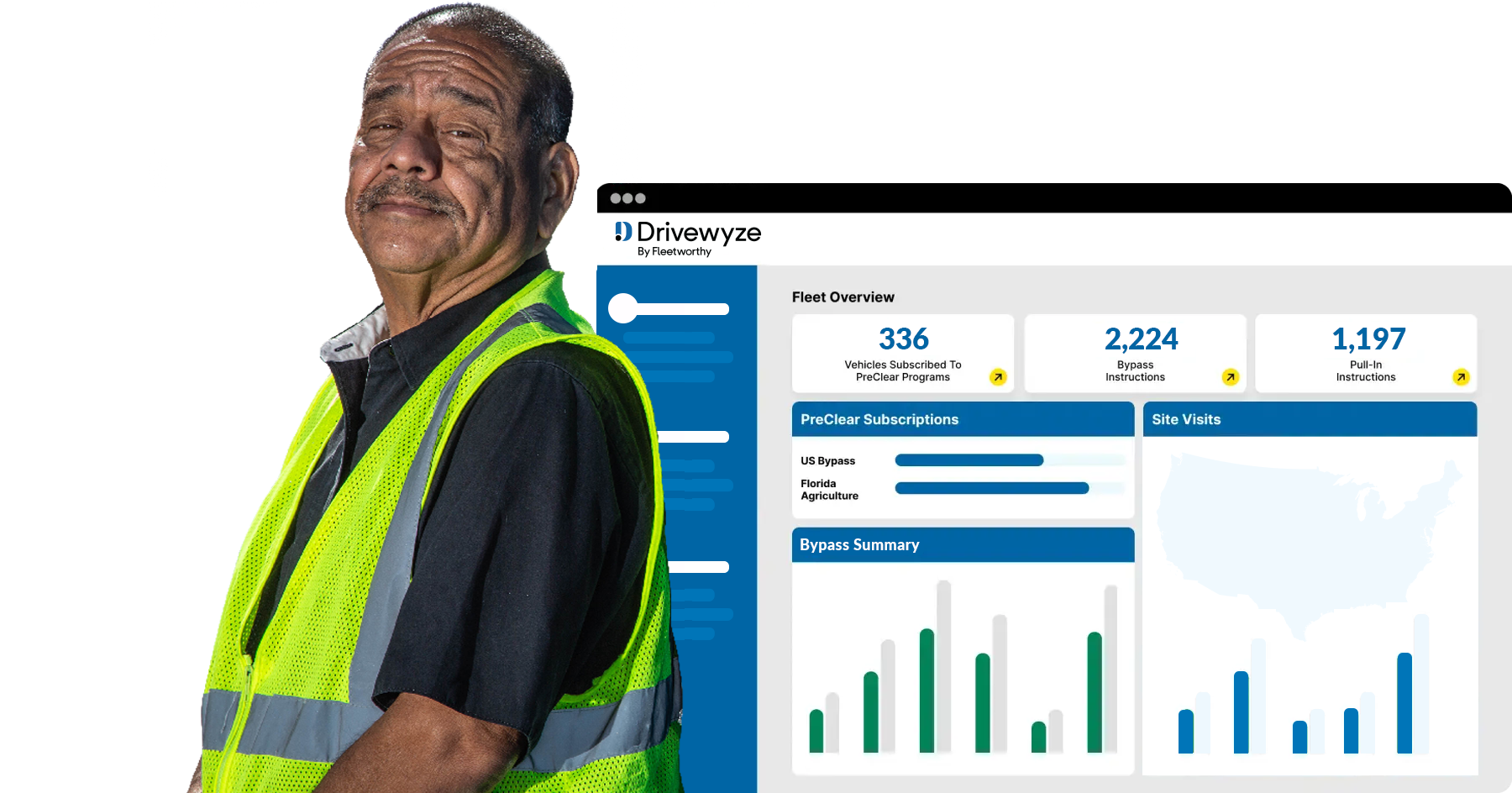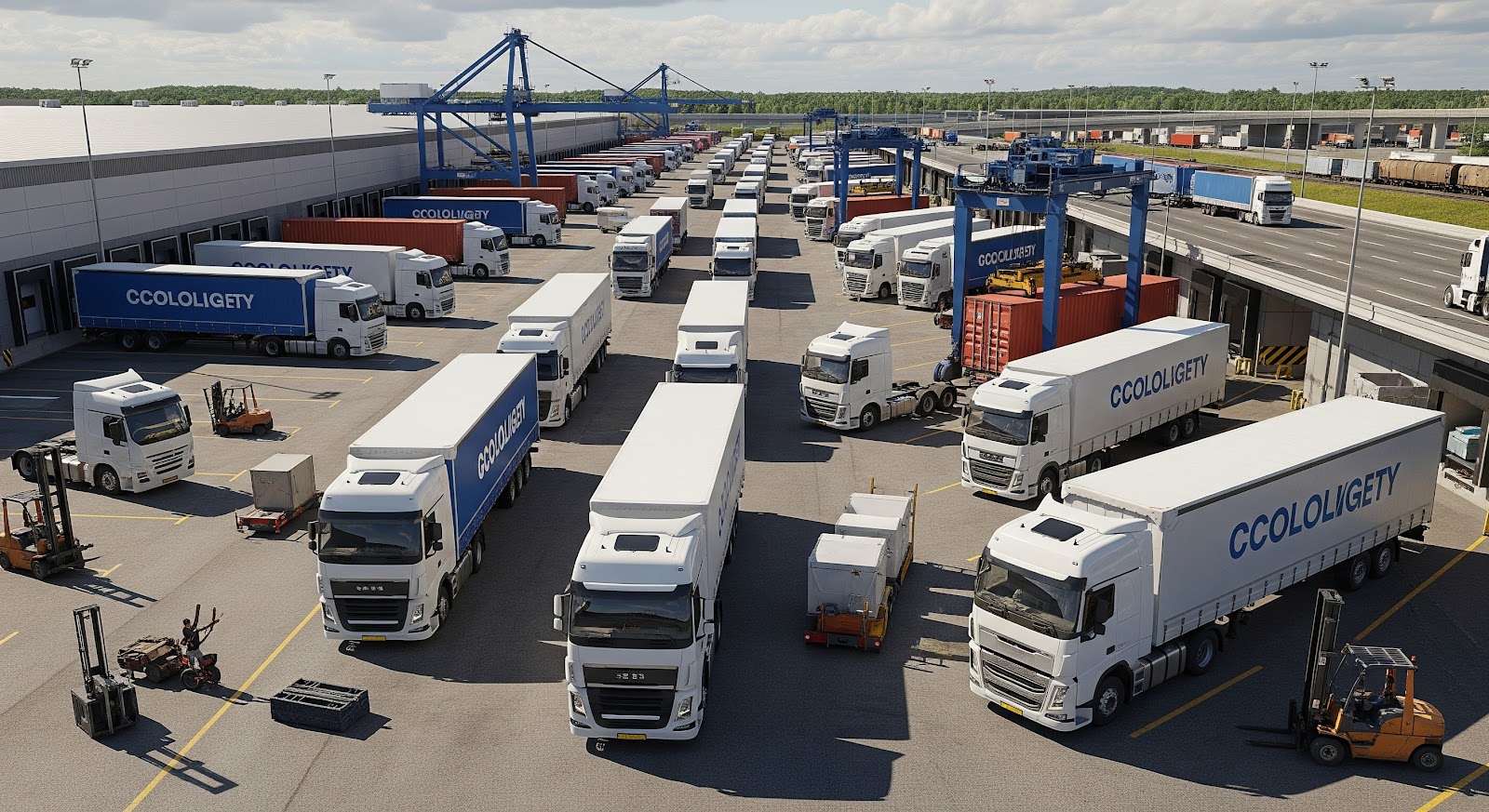Fleet safety is no longer just a compliance requirement—it’s a business imperative. With growing pressure from regulators, insurers, and shippers, fleets are expected to proactively identify risks, reduce violations, and protect their drivers and brand. But where do you start?
The answer lies in your data—specifically, your fleet safety metrics.
Fleet metrics are the operational data points that give visibility into how your vehicles and drivers are performing on the road. When used correctly, safety-related metrics—like speeding events, harsh braking, inspection histories, and Hours of Service (HOS) compliance—reveal patterns that can help fleets prevent accidents, reduce CSA violations, and coach drivers more effectively.
But metrics alone aren’t enough. The real value comes from turning those insights into action: identifying at-risk behaviors early, implementing real-time alerting, and reinforcing a culture of safety across your fleet.
Why Safety-Focused Metrics Matter
In a risk-heavy industry like trucking, the difference between reactive and proactive safety management often comes down to visibility. When fleets have real-time access to safety-focused metrics, they can act before violations happen—preventing roadside incidents, protecting their CSA scores, and building trust with both drivers and regulators.
Proactive Safety Begins with Data Visibility
Safety metrics offer a window into driver behavior, vehicle performance, and compliance risk. Without this data, fleets are essentially driving blind—responding only after an incident occurs. With it, they can identify early warning signs: a driver repeatedly speeding through high-risk zones, a vehicle triggering multiple harsh braking events, or a pattern of failed inspections at certain weigh stations.
By monitoring and analyzing these metrics, safety managers can pinpoint exactly where coaching is needed, fine-tune routes or schedules, and adjust internal processes to prevent violations and collisions before they happen. It’s not just about compliance—it’s about control.
The Pressure Is Rising: Industry Trends Amplify the Stakes
Fleets today are operating under a growing list of external pressures:
- FMCSA scrutiny continues to increase, with roadside inspections and safety audits placing more focus on patterns of violations and at-risk behavior.
- CSA scores have a direct impact on everything from insurance premiums to customer contracts—and a few poor drivers or violations can drag down a fleet’s entire reputation.
- Insurance costs are surging, with nuclear verdicts and risk-based underwriting making it harder and more expensive to operate without a clean record.
- Meanwhile, driver shortages are forcing fleets to retain and protect their existing drivers—making safety performance a critical factor in driver satisfaction and retention.
Relying solely on post-incident reports or quarterly safety reviews isn’t enough. Fleets need tools that help them stay ahead of risk, not just report on it.
Enhancing Traditional Safety Programs with Real-Time Tools
That’s where modern solutions like Drivewyze Safety+ come in. Instead of waiting for violations or accidents to surface in compliance reports, Safety+ provides in-cab, GPS-based alerts that notify drivers of real-time road hazards—such as upcoming speed transitions, sharp curves, and high-risk zones. These alerts act as digital co-pilots, helping drivers adjust behaviors on the fly.
In parallel, safety managers can monitor alert effectiveness and behavioral patterns through dashboards and custom reporting, closing the loop between incident prevention and ongoing coaching. These tools complement traditional training and compliance programs by adding a layer of real-time, location-aware safety intelligence—scalable across the entire fleet.
Ultimately, the fleets that win in safety are the ones that combine data, automation, and coaching—and do it before a violation or crash ever occurs.
Key Fleet Metrics That Impact Driver Safety
Tracking the right metrics isn’t just a best practice—it’s the foundation of a proactive safety program. The following fleet safety metrics offer critical insight into driver behavior, equipment performance, and compliance risk. When monitored consistently and acted upon strategically, these metrics help reduce incidents, improve coaching, and prevent violations before they occur.
1. Speeding Events
Why it matters: Speeding is consistently among the top contributors to severe crashes and DOT violations. Even minor speeding infractions—especially in construction zones, urban areas, or high-incident corridors—can escalate risk and damage CSA scores.
How to monitor: Telematics platforms and integrated safety solutions (like Drivewyze Safety+) provide real-time detection of speeding events, often down to specific speed thresholds and location zones.
How to act:
- Use in-cab alerts to notify drivers of upcoming speed changes or known high-risk areas.
- Pair these alerts with follow-up coaching, especially for drivers with repeat patterns.
- Analyze speeding trends by vehicle, driver, or region to identify systemic risks.
2. Harsh Braking and Rapid Acceleration
Why it matters: Frequent hard braking or aggressive acceleration is often a red flag for distracted, fatigued, or overly aggressive driving. It also contributes to increased wear on equipment and elevated fuel costs.
How to monitor: Most modern telematics solutions track G-force-based driving behaviors in real time, logging harsh event data across time and geography.
How to act:
- Set benchmarks for acceptable driving behavior and alert when thresholds are crossed.
- Use data trends to identify where and when these events occur—near urban traffic, sharp curves, intersections, etc.
- Build behavior-based coaching programs that address root causes (e.g., over-scheduling or lack of route planning).
3. Lane Departure and Distracted Driving Alerts
Why it matters: Lane drifting and distraction-related incidents often precede serious crashes. These behaviors can also result in DOT citations and increased liability exposure.
How to monitor: Advanced driver assistance systems (ADAS), dash cams, and AI-enabled sensors can detect signs of distraction or unintentional lane departure.
How to act:
- Integrate event data with coaching platforms to provide targeted, non-punitive feedback.
- Identify trends by time of day (e.g., late-night shifts), road type, or driver.
- Reinforce best practices around focus, fatigue management, and use of driver-assist tools.
4. Hours of Service (HOS) Violations and ELD Data
Why it matters: HOS violations often stem from deeper operational inefficiencies—over-dispatching, unrealistic scheduling, or poor communication. They also lead to compliance penalties and increase the risk of fatigue-related crashes.
How to monitor: Electronic Logging Devices (ELDs) automatically track HOS compliance, but the real insight comes from analyzing trends across drivers, shifts, and trip types.
How to act:
- Use ELD data to flag drivers at risk of non-compliance before violations occur.
- Collaborate across safety and operations to reduce late dispatching and optimize route planning.
- Monitor frequent violations by location—such as weigh stations or rest areas—and adjust accordingly.
5. Inspection History and Violation Trends
Why it matters: Every past inspection tells a story. Violations at weigh stations are more than just one-off issues—they often signal broader gaps in training, maintenance, or compliance culture.
How to monitor: Leverage internal inspection records along with real-time weigh station data from solutions like Drivewyze PreClear and Safety+.
How to act:
- Map out hotspots where inspections and violations frequently occur.
- Use Drivewyze Safety+ to deploy location-based alerts that prepare drivers for known trouble zones.
- Cross-reference inspection failures with vehicle ID or driver history to uncover recurring issues.
These metrics, when used together, create a comprehensive safety picture—one that empowers fleets to shift from a reactive stance to a predictive, preventative safety model. By layering this data with real-time tools, fleets can reduce violations, boost compliance, and protect what matters most: their drivers.
Technology Spotlight: How Drivewyze Helps
Fleet safety isn’t just about having data—it’s about acting on it in the moments that matter. Drivewyze bridges the gap between insight and action with intelligent, in-cab tools that empower drivers in real time and give fleet managers the metrics they need to continuously improve safety outcomes.
Drivewyze Safety+: Real-Time Alerts That Prevent Violations Before They Happen
Drivewyze Safety+ delivers contextual, location-based safety alerts directly to the driver’s cab—precisely when and where they’re needed most. By combining GPS, roadway data, and fleet-specific risk factors, the platform warns drivers about:
- Speed transitions and reduced-speed zones
- Sharp curves and steep grades
- High-risk intersections and rollover hotspots
- Work zones, congestion-prone areas, and school zones
- Custom fleet-identified risk zones
These alerts give drivers the critical seconds they need to slow down, refocus, and avoid costly mistakes—ultimately reducing speeding violations, rollovers, and late braking incidents.
For safety managers, Safety+ also offers powerful visibility through its dashboard reporting:
- Alert engagement by driver and location
- Trends in high-risk behaviors and response patterns
- Customizable geofenced zones and alert delivery rules
- Integration with existing telematics or ELD platforms
This real-time insight enables fleets to identify where coaching is most effective—and where operational changes may be needed.
Drivewyze PreClear: Reduce Inspection Frequency and Lower Driver Stress
Unnecessary inspections don’t just delay shipments—they also put drivers under pressure, increase the chance of violations, and contribute to overall fatigue. Drivewyze PreClear helps by providing bypass opportunities at over 900 locations across North America.
With PreClear, qualified vehicles and drivers can bypass weigh stations based on:
- Safety scores (CSA and ISS)
- Credential compliance
- Verified weight and vehicle data
The result: Fewer stops, fewer chances for minor violations to become major issues, and reduced stress for drivers who consistently operate within safe and compliant standards.
By minimizing interruptions, PreClear helps fleets:
- Maintain delivery schedules
- Reduce idling and fuel usage
- Improve driver morale and retention
- Avoid violations tied to random inspections
Consider including a visual mock-up or screenshot of:
- A Safety+ dashboard showing alert engagement by region or risk category
- A PreClear event report showing successful bypasses and inspection avoidance metrics
- A comparison chart showing incident reductions pre- and post-Drivewyze adoption
Together, Drivewyze Safety+ and PreClear form a powerful safety and compliance ecosystem—giving fleets the real-time edge they need to improve performance, reduce violations, and protect their drivers. These tools are easy to deploy, scalable across large and small fleets, and designed to deliver measurable ROI in both safety and operational efficiency.
Turn Your Fleet’s Safety Metrics into Actionable Insights with Drivewyze
Ready to leverage your data and transform fleet safety from reactive to proactive?
Connect with Drivewyze today—your partner in forging a safer, smarter, and more efficient transportation ecosystem.

Ready to Get Started?
Learn how North America’s leading carriers use Drivewyze to save money and improve safety.





